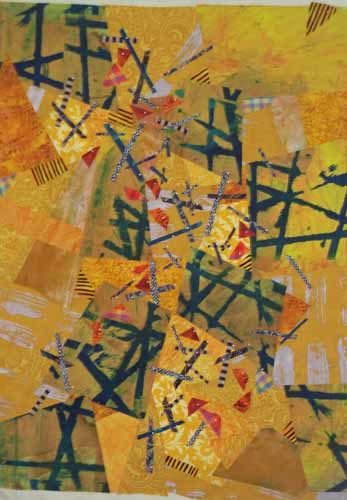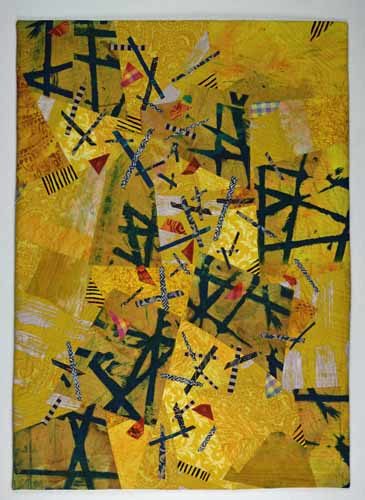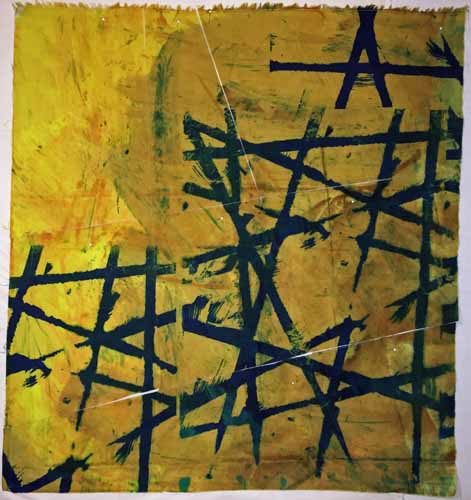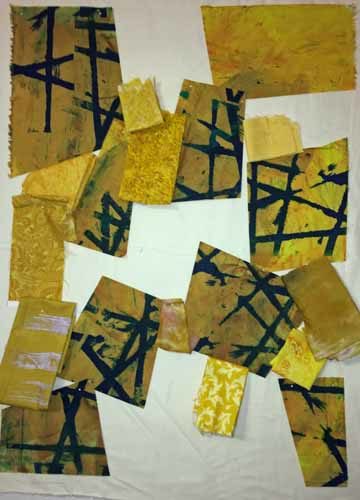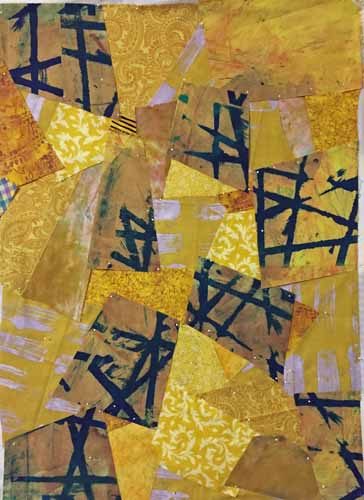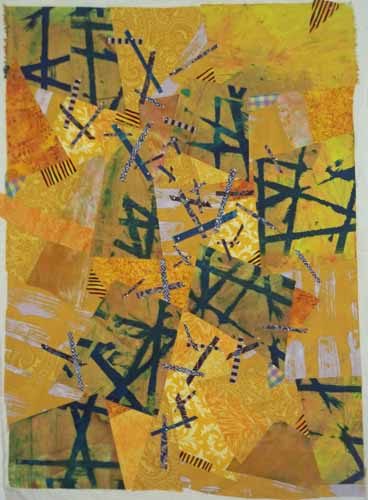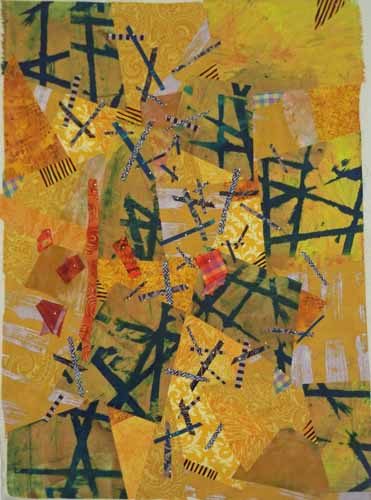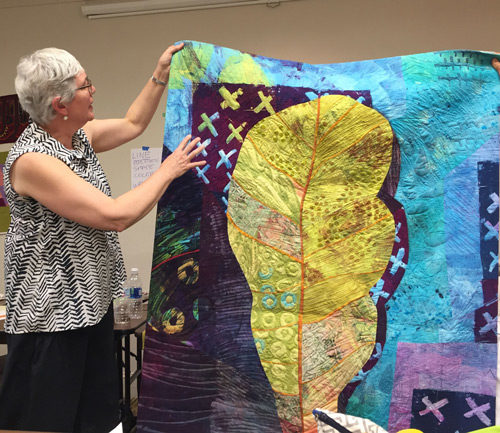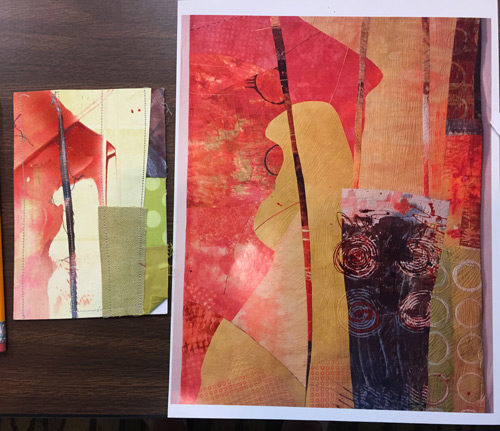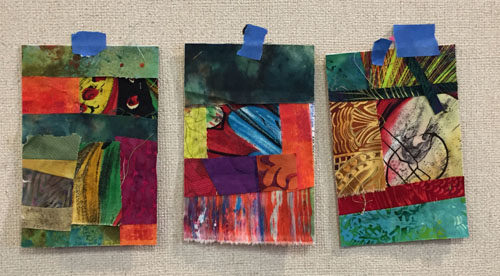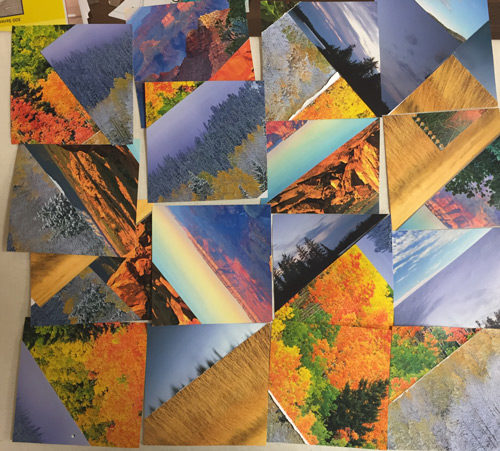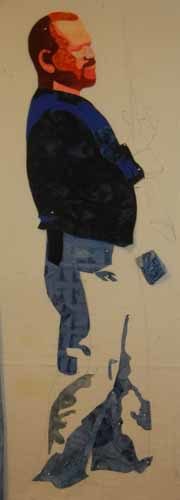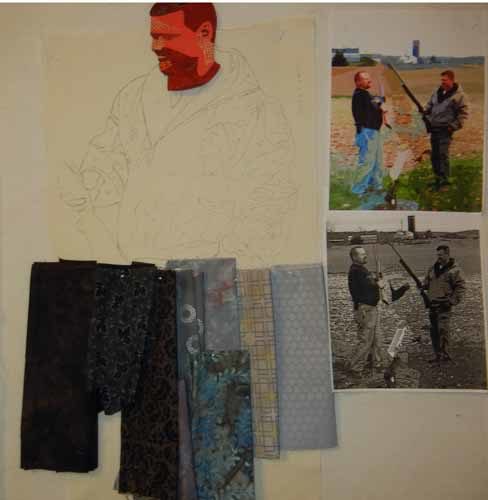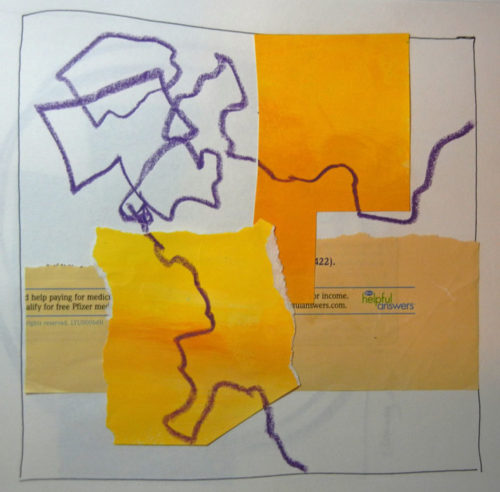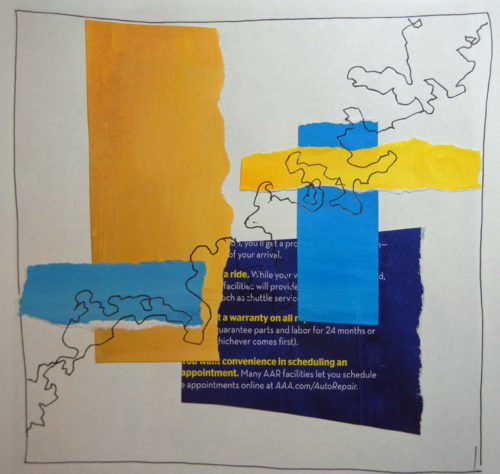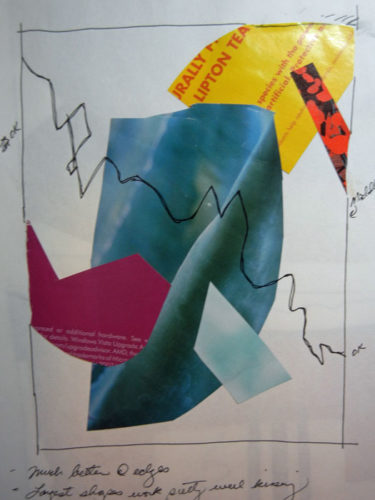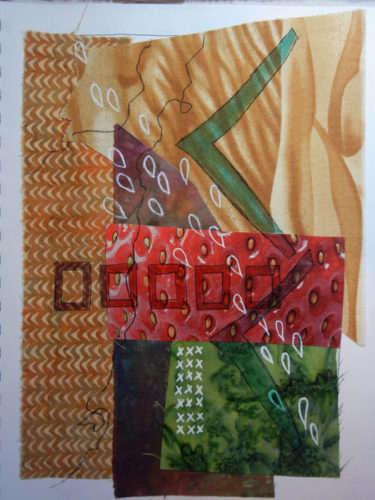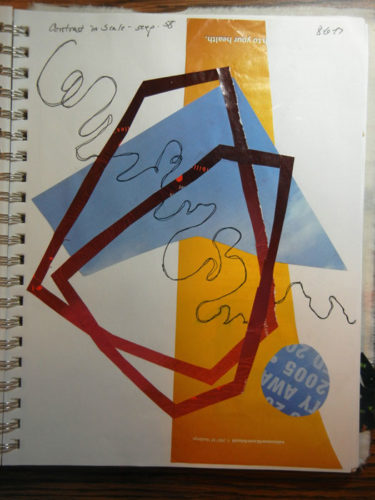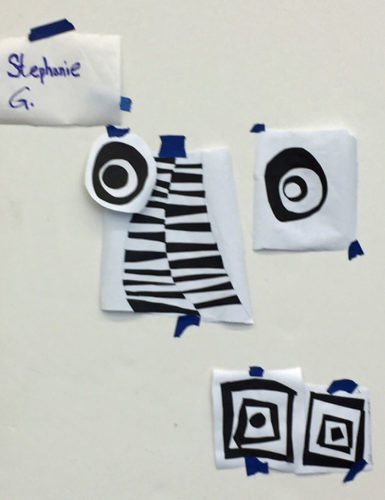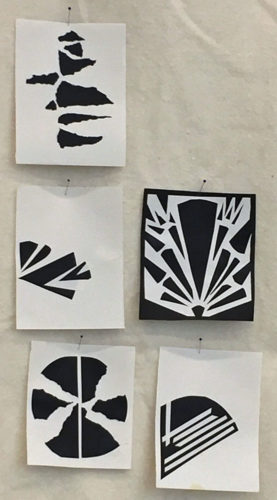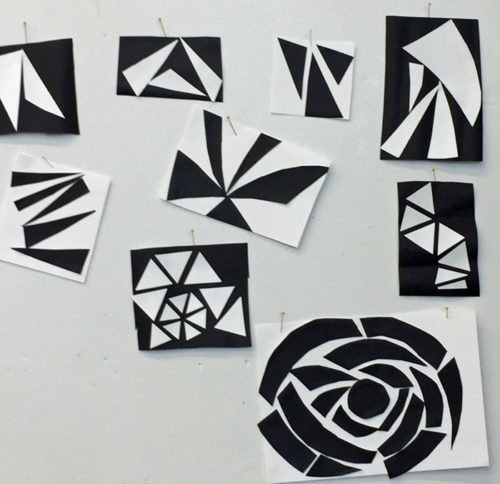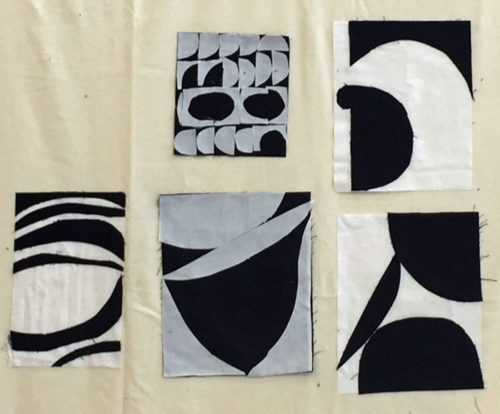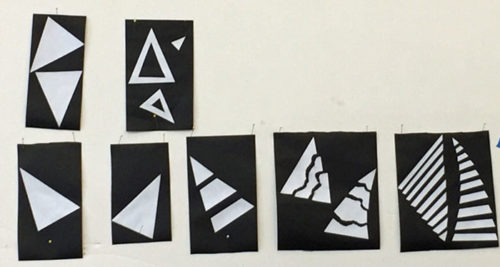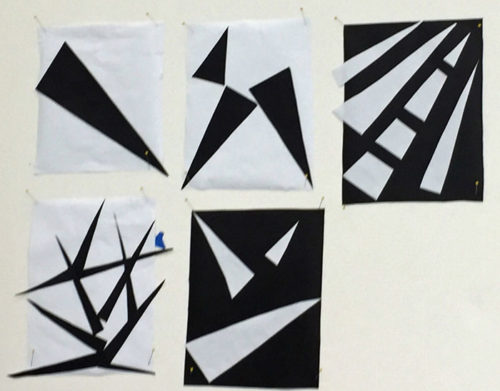Well, I just wasn’t happy with the in-progress quilt I showed you last time. It seemed a little static.

I tried to analyze what needed to change and I referenced my original black and white sketch.

Wait a second. It was different from the working sketch I’d been using:

At some point I had switched the values of the two loosely horizontal lines. I had worked with the one showing the lower line dark and the top one very light. But now, looking at what was currently in my sketch book, I thought the other (top) version was definitely better. Could such a subtle thing make that much difference? Well, in my mind it clearly did.
So, I decided to make some changes. In addition to the value shift I wanted to really play up the red as the primary motif color and to make the lines fatter and more irregular. (Again, more like the sketch.) I took all the motif pieces off and started again on the plain background. (Two steps back.)
My redo was much easier than my first attempt, probably because I had a clearer idea of what I wanted to achieve. “Play up the red” was my first priority.

Bam! As soon as I put this up I liked it SO much better! There was the drama I had been missing! After auditioning some red fabrics, I came up with this.

Yes! A definite improvement. From here my goal was to add interest without detracting from these strong red lines. Which meant that most of the lines would be low contrast. Like the aqua lines I was adding below.

Auditioning green for the lower line: I was liking it better than the previous yellow. Of course, it needs to tuck under at least some of those lines to avoid getting too much attention. Did you notice that I tweaked the red “horizontal” line?

But, should I add some yellow somewhere? I was still fiddling at this point, but getting very close to finalizing everything.
There you have it: 3 steps forward in my previous post and 2 steps backward in this one. But, I don’t let that bother me, especially since I eventually moved forward I figured out what was wrong and corrected it. There’s often some trial and error in art making and I don’t let it discourage me. In fact, sometimes I think I just have to get that wrong thing out of my head before I can properly entertain something better. Does anyone else have that experience?
Ellen Lindner
